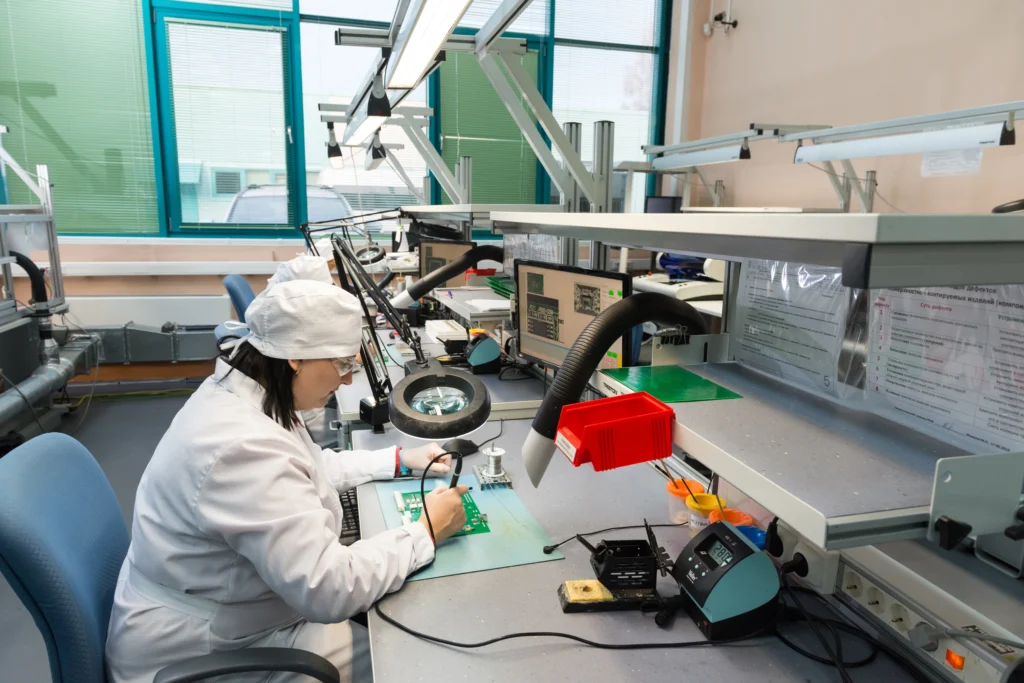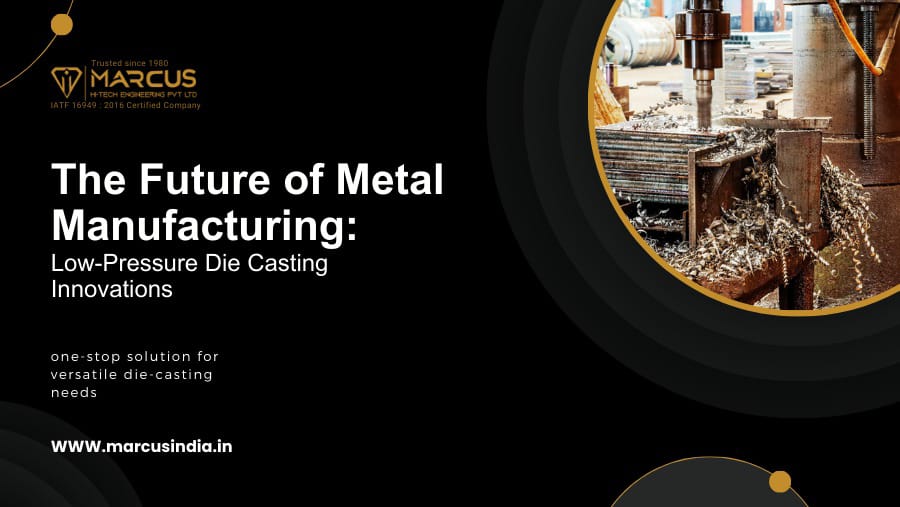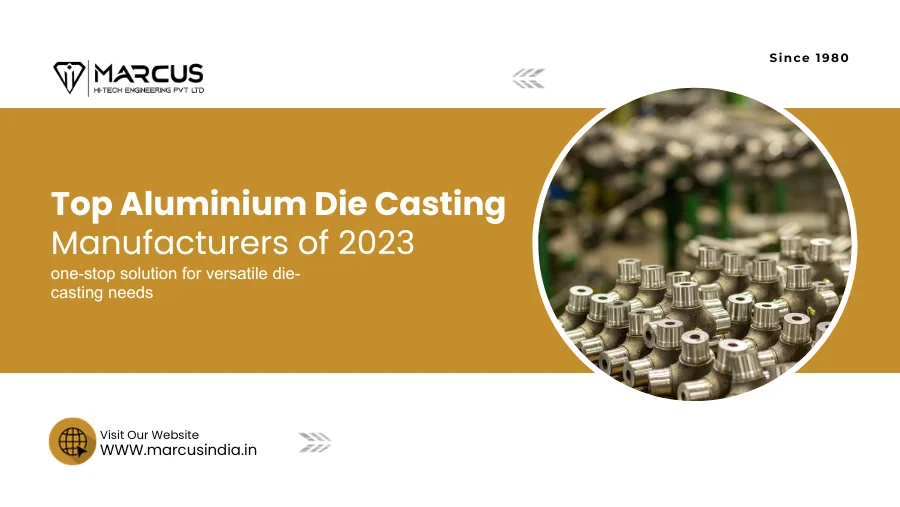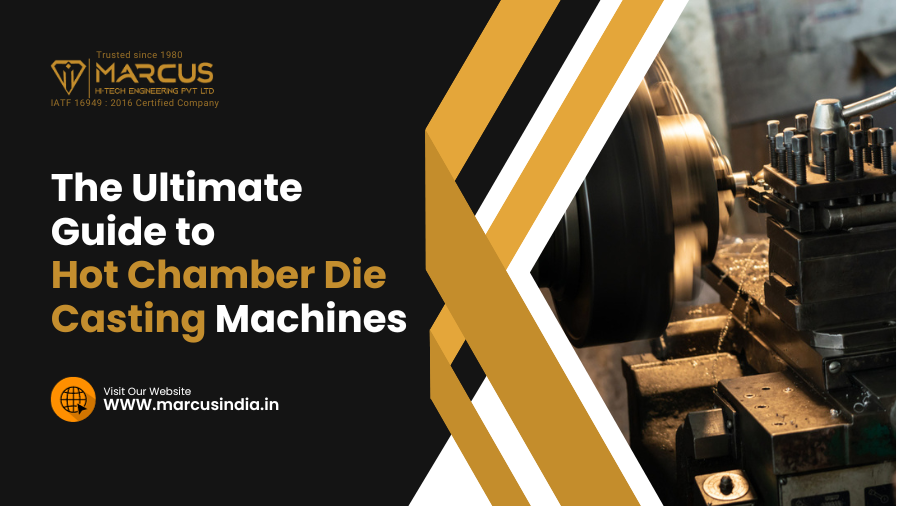
True success originates from producing premium quality die-casting products and the proper inspection methods applied throughout the process.
From raw products to the finishing touches, every step must be run through rigorous quality checks. Ensuring top-notch quality and inspection is the responsibility of the die-casting suppliers in India to avoid issues with the soundness, mechanical properties, surface finish, and final dimensions of the finished casting. Successful inspection makes the foundry and clients feel confident in the final product.
To help suppliers to earn client’s trust and confidence, here we’ve listed some inspection and testing methods for die casting.
The Significance of Quality Control in Die Casting
Die-casting, a process that involves injecting molten metal into a mold cavity to form complex shapes, hinges upon precision and accuracy. Flawless execution is paramount to prevent defects such as porosity, inclusions, dimensional inaccuracies, and surface imperfections. Consequently, die-casting suppliers in India deploy comprehensive quality control mechanisms to uphold the integrity of their products.

1. Visual Inspection
Visual Inspection is a fundamental quality control technique used in manufacturing processes, including die-casting, to detect surface defects, irregularities, and other visible imperfections in components. This method relies on human perception to identify anomalies that automated systems or other testing methods might not catch. It is often the first step used by die-casting suppliers in India in the quality control process, allowing inspectors to identify and address issues before further testing or assembly quickly.
2. Dimensional Measurement
Dimensional measurement is a critical facet of quality control in manufacturing processes, including die-casting, where precision and accuracy are paramount. This process involves quantifying a component’s physical dimensions and geometric features to ensure they align with the specified tolerances and design requirements. die-casting suppliers in India use various advanced measurement tools such as calipers, micrometers, laser scanners, and coordinate measuring machines (CMMs); manufacturers can meticulously assess attributes like length, width, height, diameter, angles, and intricate geometric profiles.
3. X-Ray and CT Scanning
X-ray and CT scanning, two advanced non-destructive testing techniques, have revolutionized quality assurance in die-casting and manufacturing. X-ray scanning involves using high-energy X-ray beams that penetrate the component, creating a radiographic image that reveals internal structures, defects, and inclusions.
This method is particularly invaluable for detecting hidden issues like porosity, voids, and cracks that could compromise the structural integrity of die-casted components. Computed Tomography (CT) scanning takes this further by compiling a series of X-ray images from different angles, creating a three-dimensional cross-sectional representation of the element.
4. Dye Penetrant Inspection
It is a powerful tool for uncovering surface-breaking defects that might not be readily visible to the naked eye. In this process, a liquid dye is applied to the component’s surface, allowed to seep into any surface discontinuities, and then excess dye is carefully removed. A developer is subsequently applied, drawing the trapped dye out of the defects and making them visible under proper lighting conditions. This technique detects small cracks, fractures, porosity, and other surface irregularities that could compromise the structural integrity or functionality. Of the die-casted components
5. Ultrasonic Testing
As a pivotal pillar in the edifice of quality assurance within the domain of die-casting and manufacturing at large, ultrasonic testing harnesses the power of high-frequency sound waves to probe the internal structure of components, unveiling hidden defects and anomalies that could potentially compromise the integrity of die-casted parts. By transmitting ultrasonic waves into the material and monitoring the echoes that bounce back, skilled technicians can discern irregularities such as voids, cracks, and inclusions that might not be apparent on the surface.
6. Hardness Testing
A cornerstone of material assessment within the area of die-casting, this method involves measuring a material’s resistance to indentation, offering insights into its mechanical properties, strength, and suitability for its intended application. Die-casting suppliers in India employ various techniques such as Brinell, Rockwell, and Vickers hardness tests to evaluate the hardness of components. In the Brinell test, a hardened steel ball or tungsten carbide ball is pressed into the material’s surface, and the resulting indentation diameter is measured to determine the material’s hardness.
7. Tensile and Impact Testing
Tensile testing involves subjecting a standardized specimen to gradually increasing axial forces until it fractures. By measuring the load and deformation, engineers can extract critical mechanical properties such as ultimate tensile strength, yield strength, and elongation – all essential indicators of a material’s ability to withstand applied forces. On the other hand, impact testing assesses a material’s resilience by subjecting it to a sudden, dynamic load. This test quantifies the energy the material absorbs as it fractures, thus providing insights into its ability to absorb shocks without catastrophic failure.
8. Chemical Analysis
This technique works by scrutinizing the chemical composition of metals and alloys used in die-casted components, unveiling elemental percentages and trace elements that are key to material properties and performance. Die-casting suppliers in India utilize sophisticated methods such as spectroscopy to dissect the composition with exceptional accuracy. By deciphering the atomic makeup of materials, manufacturers can ensure that the alloy adheres to stringent specifications, safeguarding against inconsistencies that could compromise mechanical integrity or introduce vulnerabilities during service.
9. Pressure Testing
By conducting pressure tests, manufacturers can detect and address weaknesses, leaks, or inadequate seals that might compromise the performance and safety of the final product. Whether using hydrostatic, pneumatic, or other specialized techniques, pressure testing provides critical insights into a component’s ability to withstand the rigors of its intended use, from fluctuating pressures to temperature variations.
Safeguarding Environmental and Ethical Concerns
In addition to ensuring product quality, responsible die-casting suppliers in India increasingly focus on sustainability and ethical practices. Aspects such as material sourcing, energy efficiency, waste management, and adherence to environmental regulations play a crucial role in establishing a holistic quality assurance approach.
Also Check: Key Factors to Consider When Selecting Die Casting Suppliers in India
Over to You!
Confirming that your die-casting supplier has a comprehensive quality control process that incorporates inspection and testing methods is crucial.
Are you looking for supreme-quality die-casting solutions? If yes, then Marcus is your go-to source. With nearly five decades of experience, Marcus offers versatile die-casting solutions focusing on quality, seamless delivery, and the lowest lead times. Discuss our proven quality control methods to ensure your project is in good hands. Visit https://marcusindia.in/ to learn more.
FAQs
Die casting is a manufacturing process where high-pressure forces molten metal into a mold cavity. The metal cools and solidifies, taking the shape of the mold. The mold is then opened, and the newly formed metal part is ejected.
Several finishing options are available for die-cast parts, including painting, plating, anodizing, and powder coating. These finishing options can help improve the appearance and durability of the parts and provide additional protection against corrosion and wear.
Marcus has a comprehensive quality control system in place to ensure that all parts produced meet or exceed customer requirements. This includes rigorous testing and inspection throughout the production process and ongoing monitoring and evaluation of quality metrics.
Yes, Marcus can provide custom tooling for die-casting projects. The company has in-house tooling capabilities and can work with customers to design and manufacture custom molds and tooling to meet their specific needs.
Marcus offers a range of design support services for die-casting projects, including design for manufacturability (DFM) analysis, 3D modeling, and prototyping. The company’s team of experienced engineers can work with customers to optimize their designs for the die-casting process and ensure that parts can be produced efficiently and effectively.










